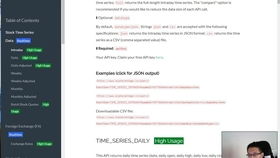How to Make Money Day Trading on Robinhood
Day trading on Robinhood can be an exciting and potentially lucrative way to invest your money. However, it’s important to approach it with a well-thought-out strategy and a clear understanding of the risks involved. In this guide, I’ll walk you through the essential steps and considerations to help you get started on the path to making money day trading on Robinhood.
Understanding Day Trading

Day trading involves buying and selling stocks, options, or other financial instruments within the same trading day. The goal is to profit from short-term price movements. Robinhood, a popular online brokerage platform, offers a user-friendly interface and low fees, making it an attractive option for day traders.
Creating a Robinhood Account

To begin day trading on Robinhood, you’ll need to create an account. Here’s how to do it:
- Visit the Robinhood website or download the app.
- Enter your personal information, including your name, email address, and phone number.
- Provide your Social Security number and answer a few security questions.
- Link your bank account or credit card to fund your trading account.
- Complete the identity verification process.
Once your account is set up, you can start trading immediately.
Researching and Analyzing Stocks

Successful day trading requires thorough research and analysis. Here are some key factors to consider:
- Market Trends: Stay updated on the latest market trends and economic indicators. This will help you identify potential opportunities.
- Stock Performance: Analyze the historical performance of the stocks you’re interested in. Look for patterns, such as support and resistance levels, and identify any technical indicators that may signal a potential trade.
- News and Events: Keep an eye on news and events that may impact the stock’s price, such as earnings reports, product launches, or regulatory changes.
- Volume and Liquidity: High trading volume and liquidity indicate that the stock is actively traded, making it easier to enter and exit positions.
There are numerous tools and resources available to help you with your research, including financial news websites, stock market apps, and technical analysis software.
Developing a Trading Strategy
A well-defined trading strategy is crucial for success in day trading. Here are some key elements to consider:
- Time Frame: Decide how long you plan to hold your positions. Some traders prefer to trade intraday, while others may hold positions for a few hours or days.
- Entry and Exit Points: Determine the criteria for entering and exiting trades. This may include technical indicators, price levels, or market conditions.
- Position Sizing: Decide how much capital you’re willing to risk on each trade. It’s important to maintain a healthy balance between risk and reward.
- Stop Loss and Take Profit: Set stop loss and take profit levels to manage your risk and protect your profits.
It’s essential to backtest your strategy using historical data to ensure it’s effective before implementing it in live trading.
Managing Risk
Risk management is a critical aspect of day trading. Here are some tips to help you mitigate risk:
- Stop Loss Orders: Use stop loss orders to limit your potential losses on each trade.
- Position Sizing: Avoid over-leveraging your account by risking too much capital on a single trade.
- Emotional Control: Stay disciplined and avoid making impulsive decisions based on emotions.
- Continuous Learning: Stay informed about market trends, trading strategies, and risk management techniques.
Remember, day trading involves significant risk, and it’s possible to lose money. Always trade with capital you can afford to lose.
Monitoring and Adjusting Your Strategy
Market conditions and your own performance may require you to adjust your trading strategy over time. Here are some tips for monitoring and adjusting your strategy:
- Track Your Performance: Keep a record of your trades, including the stock, entry and exit points, and the outcome.


